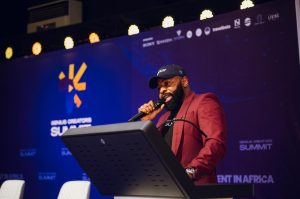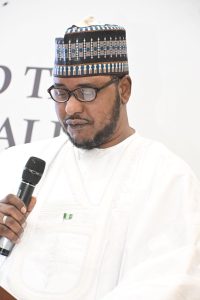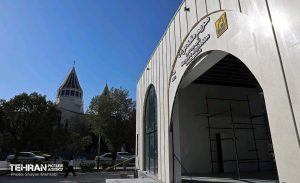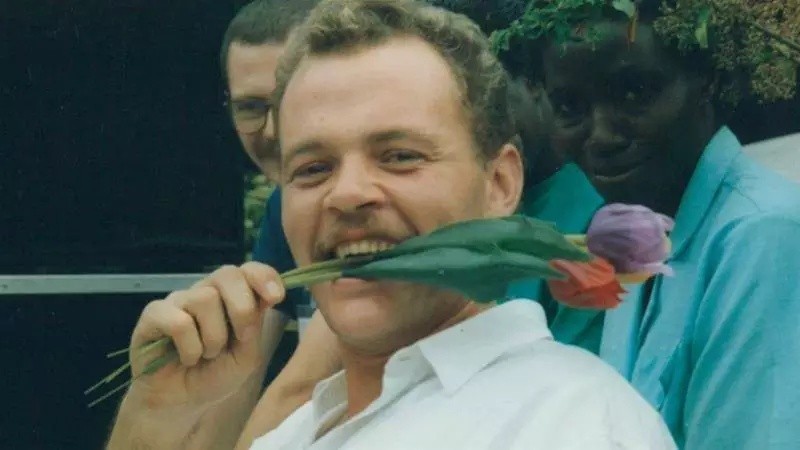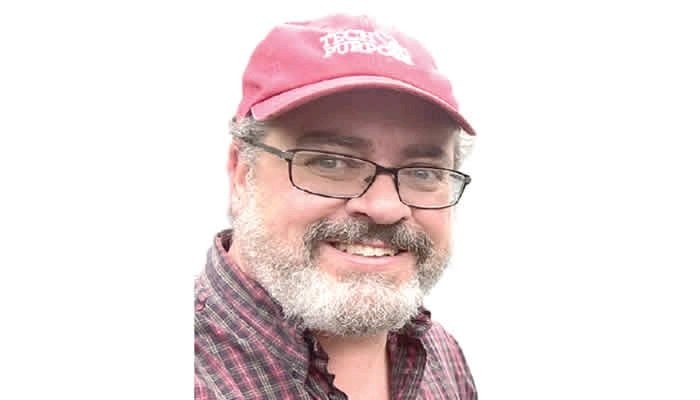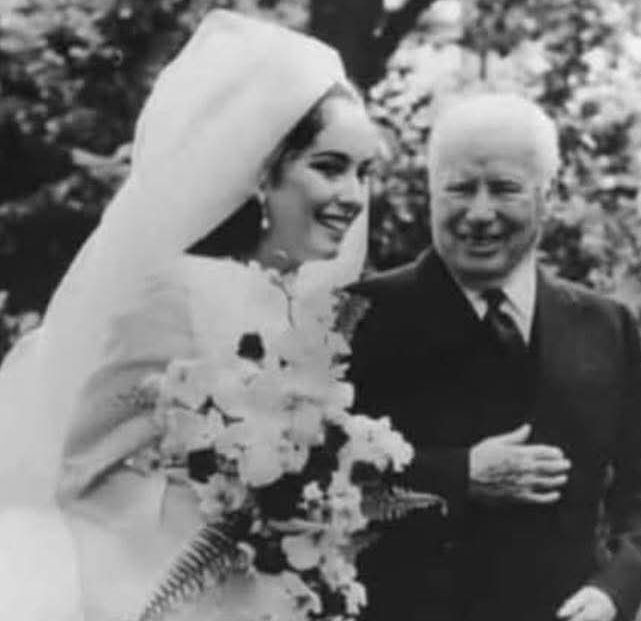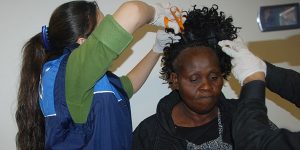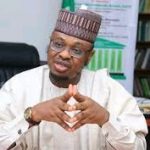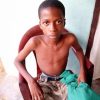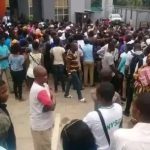![I was diagnosed with AIDS in 1986 and I'm still around 'My virus is older than all the young people that I now work with,' writes Mellors [Courtesy of Shaun Mellors]](http://img2.transcoder.opera.com/assets/v2/1f3536cf5987a4b47da0fce74e747756?source=nlp&quality=uhq&format=webp)
The International AIDS Conference is the largest conference on any global health issue in the world. First convened during the peak of the AIDS epidemic in 1985, it continues to provide a unique forum for the intersection of science, advocacy, and human rights. The 22nd International AIDS Conference (AIDS 2018) will be hosted in Amsterdam, Netherlands, between July 23-27, 2018.
I was diagnosed with HIV on December 24, 1986. I remember the day so well – I had a student summer job at a supermarket chain. I collapsed at work and was rushed to the Johannesburg General Hospital.
I was given an AIDS diagnosis and a death sentence, just six months to live, after a doctor examined me and assumed that (because I disclosed my sexual orientation) I had to have AIDS. What followed was days of confusion, fear, anxiety and isolation: biohazard stickers on my hospital door, hospital staff and visitors having to wear the full protective clothing (looking like space monsters, I thought). I was confronting my death at the age of 21.
But I managed to beat the doctor’s death sentence.
Six years later, in 1992, I attended the International AIDS Conference in Amsterdam under the theme “A world united against AIDS”.
By then, I had already publicly disclosed my HIV status in South Africa. I had stopped seeing myself as a victim or a patient and started seeing myself as a person, a person living with HIV. I had found spaces where I did not have to fear disclosing my HIV status or be concerned about people discriminating against me. I felt I was moving forward with a greater sense of purpose.
Almost 8,000 people – scientists, clinicians, NGO workers, policymakers and people living with HIV – were with me at that conference. It really felt like the world was united against AIDS. I used this opportunity to connect with them, be inspired by them and share my experiences. It was an important platform for bringing together all the different stakeholders and partners in the fight against HIV and AIDS.
But, back then, it was not easy to hold such conferences.
HIV and human rights
The organisers, the International AIDS Society (IAS), originally planned to hold that year’s conference in Boston, US. But in 1987, at the height of a global panic about HIV and AIDS, the Reagan administration had imposed a ban on HIV-positive foreigners travelling to the US; the ban was officially reversed only 22 years later, by President Barack Obama. The IAS eventually decided to move the conference to the Netherlands to avoid complications.
This was perhaps one of the first incidents that made everyone realise that HIV was a human rights issue – people living with HIV were being denied most fundamental rights only because they were carrying a virus. Some politicians in the US (and in other countries around the world) thought they could prevent the spread of HIV by closing their borders. Of course, HIV knew no borders and did not discriminate based on nationality. There was already a growing HIV epidemic in the US, so these restrictions did not make much sense.
Despite the venue change, the conference was extremely successful. By getting all those people together, against all odds, the organisers showed the world that in order to have an effective response to the HIV epidemic, people with HIV simply had to be included into the conversation. They had to be part of the discussions and the decisions about the disease that they were living with.
At the conference, I reconnected with many friends who I had met at a London conference a year earlier, and sadly, heard stories of some who did not make it, as they had died from HIV-related complications. We were losing far too many friends to HIV-related illnesses all around the world. There was no treatment back then – all we had was hope, passion, activism and each other.
At the Amsterdam conference, I also became painfully aware of the “health divide” between rich countries and poor(er) countries.
In the global north, clinical trials related to antiretroviral (ARV) treatment were being carried out. Many people with HIV lucky enough to be living in this part of the world were volunteering in these trials to see whether a certain drug would work.
By doing so, they were not only helping themselves, but also everyone else living with HIV – even the ones living on the other side of the globe, like myself. I am very grateful to those volunteers who participated in these clinical trials because they allowed scientists to demonstrate what worked and what did not work. But most importantly, they gave us hope that one day there would be treatment for all.
The 1992 conference also had sessions on “psychosocial care and treatment” which included alternative, complementary and traditional therapies and lots of emphasis on counselling protocols, treatment of opportunistic infections, dealing with death, dying and multiple losses.
This was sadly the reality for many of us in the global south – trying to live with HIV by trying different therapies and routines to stay as healthy for as long as possible. We were sharing our fears and concerns in counselling sessions, with some of us even becoming counsellors ourselves. Although we had treatment for opportunistic infections, there was a constant sense of loss and fear during the mid to late 1990s.
Then Vancouver happened – the International AIDS conference of 1996. It was at that conference in Canada that we learned ARVs were working. Finally, we had hope for a treatment. I remember standing in the hall during the conference when the results of the clinical trials were announced and saying to my friend, “We are going to live!”
Realising that a cocktail of drugs could keep us alive was incredibly emotional and empowering. Of course, the global health divide was still as valid as it was four years earlier. There was a treatment that could work, but we didn’t know when it would reach the people living in the global south.
It took another four years for the world to take action to right this wrong. At the 2000 AIDS conference in Durban, South Africa, a commitment was made to address this “health divide” and make sure everyone living with HIV, no matter where they live, had access to ARVs.
Building bridges
Fast forward to 2018. I am fortunately still around – a little greyer, with more wrinkles, a bit wiser but still involved in HIV activism. And for this year’s International AIDS conference, I am once again heading to Amsterdam – the city that hosted us in 1992, when it was not possible for us to travel to the US. The theme of this year’s conference is “Breaking Barriers, Building Bridges” and it will bring together 25,000 people working in different sectors of the HIV response.
Incredible strides have been made in the 26 years since the first Amsterdam conference. Twenty million people living with HIV are now on ARV treatment and due to more widespread access to effective treatments, HIV incidence and AIDS-related mortalities are steadily decreasing. There is also greater recognition of the important role effective treatment plays in prevention, and the mere fact that people are living with HIV longer.
While we should celebrate these considerable achievements, there is still much that remains to be done. Today, we are facing an important turning point in the fight against HIV. If we can lower the number of new infections and ensure that those who are living with HIV are all tested and supported to be on treatment, then we can really beat AIDS.
But we are facing some significant challenges. HIV is no longer receiving the political attention and funding that it requires. Moreover, in some parts of the world, the virus is still widespread, especially in groups and populations that are ostracised or criminalised – gay men and other men who have sex with men, sex workers, transgender people and people who use drugs.
The fact that these populations are criminalised makes it harder for them to access the information and services that they require to protect themselves from HIV and as a result, we can see an increase in HIV in these populations. We will never end AIDS if we chose to exclude or ignore the needs of all populations and people.
According to the latest statistics from UNAIDS, while there are 21.7 million peoplein treatment, there are still 15.2 million who are not. We need to redouble our efforts and our resources to ensure that all people who require access to treatment, especially the groups that are mentioned above, have access.
Treatment keeps people healthy, allows people to engage in society and live a normal life and also reduces the chances of them transmitting HIV. For example, I have an undetectable viral load in my body – the treatment that I am on is suppressing viral activity so the virus is dormant. This means that I cannot transmit HIV to a sexual partner. Scientists are still constantly working to improve these treatments, make them easier and simpler to take and minimise their side effects.
We also have a lot of work to do around HIV prevention. There are still 1.8 million new HIV infections a year and this is simply not good enough. We know what works to prevent HIV and we need to ensure that every person, no matter who they are or where they are, is able to choose what option they feel works for them.
We know that HIV is the leading cause of death among adolescents and young people in sub-Saharan Africa and the second-leading cause of death globally, but we also know that adolescents and young people are not interested in HIV.
We need to find different ways of ensuring that HIV education is integrated into sexual education and that young people are actively engaged in designing and shaping strategies that work best for them. Yes, I, too, was young when I was diagnosed with HIV and my virus is older than all the young people that I now work with.
This is why I remain committed to ensuring that we have the political commitment, the resources and the will to break down barriers and build bridges that allow us to have choices with dignity, to remain healthier, immaterial of HIV status, no matter who we are or where we live.
Discover more from TOKTOK9JA MEDIA
Subscribe to get the latest posts sent to your email.

